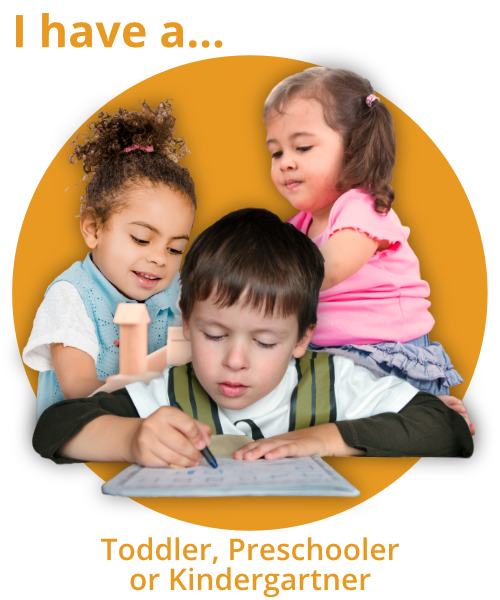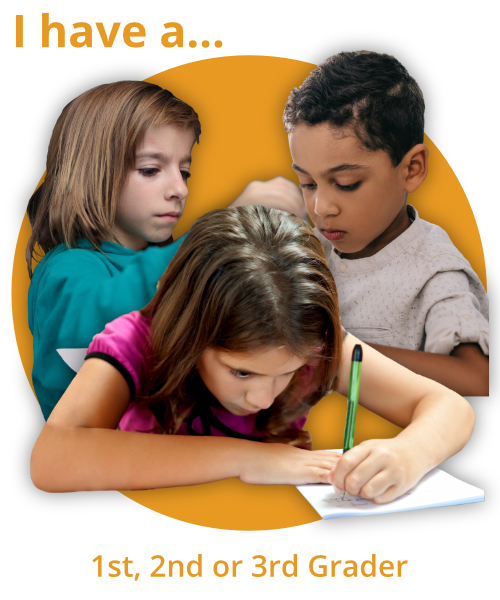The Greatest Montessori Lessons in the World
Where did we come from? What's the universe made of? Why does the capital letter A look like a triangle? Who invented numbers?
The Montessori elementary curriculum is absolutely incredible. Once you hear about these great lessons, I bet you'll want to know more.
Today, we’re talking about the Montessori Great Lessons--and why they are SO important for Montessori Elementary children. But first, if you want support in Homeschooling your Elementary Child the Montessori way, go take a look at our new course, Homeschool of the Redwoods: Lower Elementary!
I'm Aubrey Hargis, Montessorian and mom of two. Montessori is not just a method of education for me, it is a way of life. It's the way I breathe and feel at peace. It's the way I parent. It's the way I teach my children academic subjects. It's the way I learn more about my own needs and their needs as we walk through life together. Sometimes, it feels a little bit more like unschooling than schooling. But hey, that's how homeschooling works for our family.
I learn so much from my children...because education is a journey we take with our children, and the opportunities for learning start over every day.
Hey, Sweet Friend (1:30)
I hope you’ll start today by checking in with yourself a little bit, because Montessori is from the heart! In order to learn Montessori, we really have to be in tune with our emotions and our physical bodies, as well. That's why Montessorians have this proclivity towards mindful meditation, and developing rituals that help us get more in tune with our inner well being. It’s a way we prepare ourselves for deeper learning.
If you continue to do this yourself and make this practice a part of your life, then your children are going to learn how to do it as well, and will prioritize it and understand that when they are grownups themselves. There’s not a lot out there right now in larger culture that says “STOP what you’re doing and prioritize and take care of yourself.”
In fact, what I receive mostly is “Aubrey, if you are going to be a valuable human being you need to bring in money; you had better not play the part of the stay at home mama who doesn't have any kind of aspirations for herself. You need to work all the time, because your work is your value.” I am constantly pushing against that messaging. It’s essential that I continually learn how to take care of my body and my mind and my spirit in order to help nurture others.
What are the Great Lessons? (8:32)
Montessori Elementary, which we refer to as the Second plane, spans ages 6-12. Today, we’re primarily talking about the Lower Elementary age range, 6-9.
There are five main great lessons or stories that every lower elementary child gets to hear or participate in various times throughout their time in the elementary classroom. Adults get excited about these lessons when they learn about how rich they are, and how much they stimulate the child's imagination.
The first great lesson is the story of the origin of the universe.
So how did the universe actually begin? This story explains to the children that before the existence of the universe--before we had SOMEthing--there was NOTHING. This is an immense and abstract idea to impart to children...and those under the age of six simply aren't able to conceive of this kind of nothingness or wildness or bigness...so in the zero to six age group, we keep everything very concrete. Once they're around six years old, and coming into that second plane of development, we start to give them these ideas and let them know that there's more to life than what you can just see and experience on earth today.
So we start with the origin of the whole universe: the Big Bang, the connection of the elements, how the particles interacted with each other to create the building blocks that became the earth today. This is a deeply intense story to tell children. And it is such a powerful one, most children AND ADULTS are blown away when they hear this story. The whole idea of the existence of the universe...that it did not exist and then one day it is, seems magical... and it kind of leads us very quickly into spirituality, and religion.
In fact, according to her son, Mario, Maria Montessori would tell this story to children who were Catholic, like she was, and she called it “God with no hands,” because she wanted to make it clear that religion and the scientific grounding of the actual origin of life were connected. She believed that we can both have spirituality and metaphor and interpret these scientific things in metaphysical ways.
The second great lesson is the story of the origin of life.
So this is how life developed on Earth. We look at the earth, and study how the earth came to be inside our solar system. Then we look at how life could have developed on Earth...what was it like back then when life was first developing. We are basing these conversations ALWAYS in scientific fact; we want children to know that humans as they are today didn't always exist. So, we go way back in time and tell children all about the very first creatures on earth...what they looked like, and how they started to evolve.
The third great lesson is the story of the origin of humans.
This is a continued evolution story; what proto humans looked like, their scientific names, the long road of how we evolved into the humans we are today. Compared to the vastness of life developing on Earth, you know, we've only been here a very, very short amount of time. We look at the whole timeline, that leads us into humans today and how we live today on earth today.
The fourth great lesson is the story of communication.
This story is all about how humans likely learned how to speak, and how they learned to communicate with each other. We would kind of delve into some sign language, explore the the pictorial representations that people drew (which we can still in caves today). Then, we get into how different kinds of writing and lettering systems developed and evolved towards the systems that we use today!
The fifth great lesson is the story of numbers.
This is the story of how humans learned to count , why counting became important for us, and what was probably counted first. It also touches upon what the first numbers and number systems would look like. It might just really be shocking even to you the different ways that humans have counted--we know it’s not always been 0-9.
But great lessons don’t stop here. (16:16)
Montessorians have imagined many, many, many other great lessons that children might want to study during this special time of life from 6-12. I bet if you really think about it, you can dream up some just looking around the house and contemplating your own life.There are a million different types of origin stories that you could tell your children or research with your own children.
How did music come to be? What is the origin of music on earth? What is the origin of art? Anything you could put to a timeline and dramatically share the origin of is fair game.
There is no one right way. (17:26)
Everyone loves the great stories, wants to know when and how to teach them exactly. But I will tell you, there's no one right way!!!
Maria Montessori just knew that these kinds of stories would put the elementary child's imagination on fire, and spark within them a curiosity about the world. The whole reason that we tell these origin stories to our children is not because every child needs to know these EXACT stories. It's because these stories will help the child become more interested in their world and spark ideas for further research. They are a jumping off point.
Think about the Origin of the Universe: there's so many things you could study, just based off of that one lesson, right? You could go into chemistry, and start studying the periodic elements, you could study the solar system specifically, you could study galaxies, or the birth and death of stars and star systems.
There's so many things to learn about the universe, other than just this one story.
Maria Montessori never intended these five stories to be the only and most important stories for these children. These are just some beginning stories that can be used for the children to jump off into the research and exploration of the world; they are kind of like a cornerstone of the Montessori elementary approach. That's why they’re in the very first unit of my new Lower Elementary course.
Gratitude (19:37)
Today I am feeling super grateful in my heart for the Montessorians who have continued developing new support and resources for teaching this lower elementary curriculum, and especially for those of us who are teaching our elementary children at home. Jennifer Morgan who wrote Born with a Bang! immediately comes to mind--but there are so many others, too!


